Meet the Farm Animals That Help One of America’s Busiest Airports Run
At Chicago’s O’Hare International Airport, these hungry herds serve an additional purpose beyond simple gardening.
A long, verdant field runs along the northern edge of Chicago’s O’Hare International Airport, overlooking one of its seven runways. This is the workplace of some of the facility’s most unusual employees, who spend their shifts eating as much as they want. They also don’t have to worry about commuting, because they sleep here.
These seasonal workers are farm animals—goats, sheep, and one donkey who help maintain the landscape of one of America’s busiest airports by chomping on overgrown vegetation. Goats, in particular, are increasingly being hired to graze at cemeteries, parks, and other green spaces in urban areas from Paris to New York City. But at an airport, these hungry herds serve an additional purpose beyond simple gardening. As planes takeoff nearby, this shaggy gang clears long grasses, invasive species, and weeds such as poison oak and poison ivy. Their dedicated munching helps make habitats less attractive to wildlife critters that can interrupt airport operations, like, say, a raccoon on a runway, or an unfortunate flock of birds caught in a flightpath.
“This area was becoming overgrown and there was a larger bird population,” says Craig Pullins, a wildlife biologist with the U.S. Department of Agriculture who works with O’Hare to mitigate wildlife hazards. “Tall grass provides harbor for small mammals like mice that are then food for coyotes and hawks and other creatures. We recommend short manicured grass.”
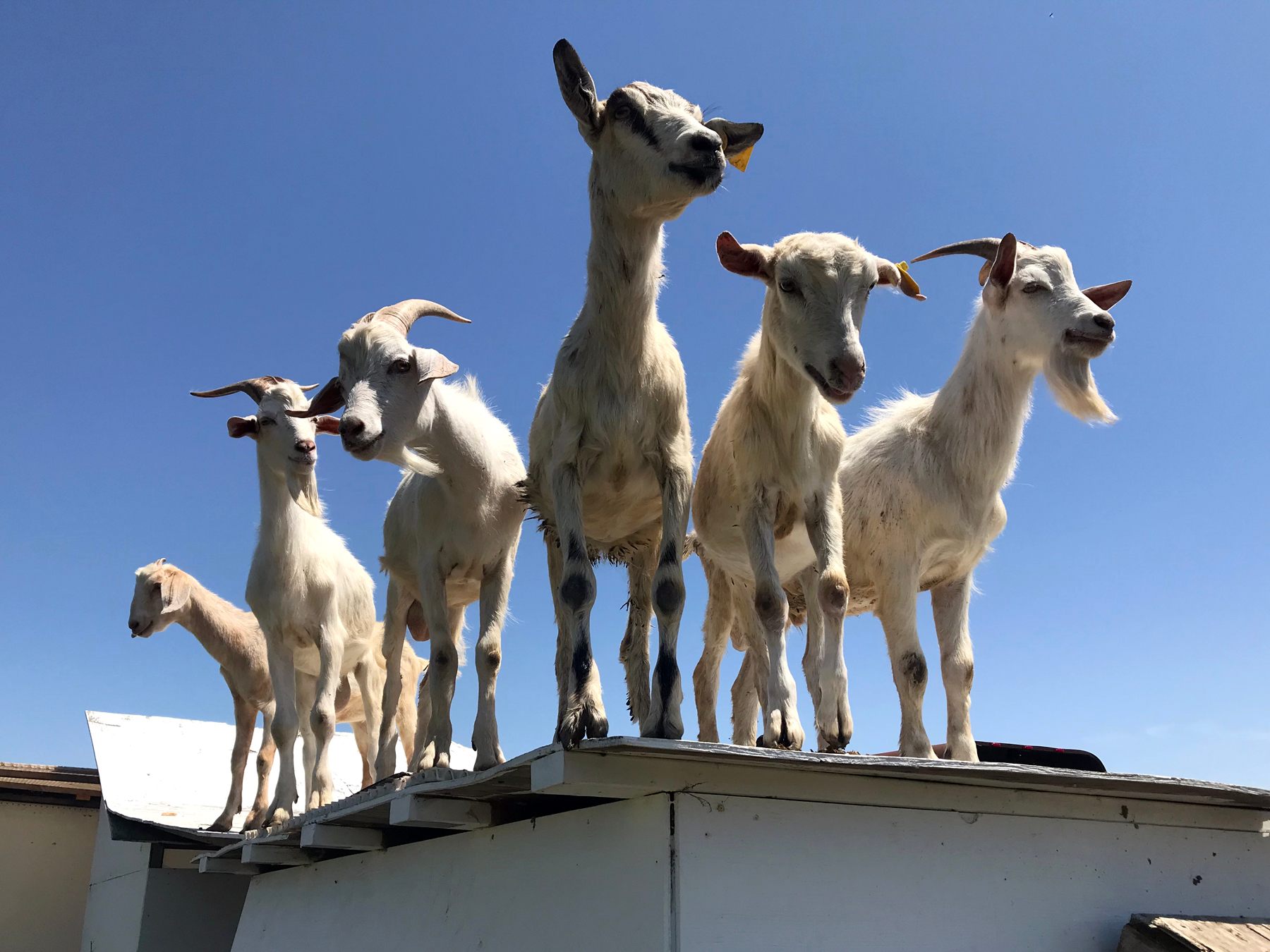
Jamie Rhee, commissioner of Chicago’s Department of Aviation, has a no-nonsense name for the farm animals’ work: “target grazing.” The four-legged employees, importantly, enable O’Hare to look after green space on its airfield in a cost-effective and sustainable way. “We use them on hilly areas in the airport where the property is really difficult to maintain with traditional mowing equipment,” she says. That means less fuel and fewer carbon emissions; there’s also little need for toxic herbicides.
CDA has recruited different grazing herds to its landscaping team since 2013, although it isn’t the sole player in its industry to do so: San Francisco International Airport and Hartsfield-Jackson Atlanta International Airport have previously brought in goats and sheep to tend to their land. So has Seattle-Tacoma International, which sacked the lot after just one week because they were too effective (read: they overate). But, if we’re talking just airports, O’Hare’s grazing herd program is the longest-running of its kind in the United States.
To find the best landscapers for the job, the airport issues requests for vendor proposals every year or two. This latest crew belongs to Andrew Tokarz, who raised them on his farm in Lemont, Illinois. Typically, his animals are either slaughtered for meat or milked to produce artisanal cheeses; this is the second year that these 30 individuals are spending a summer away from the farm. They arrived, some wearing necklaces of jangly bells, in early June 2019 and will stay for two or three months. During this time, they are estimated to eat their way across 11.5 acres of land, which is separated from the dangerous runway by a tall fence, and the road, by a creek and electric fencing.
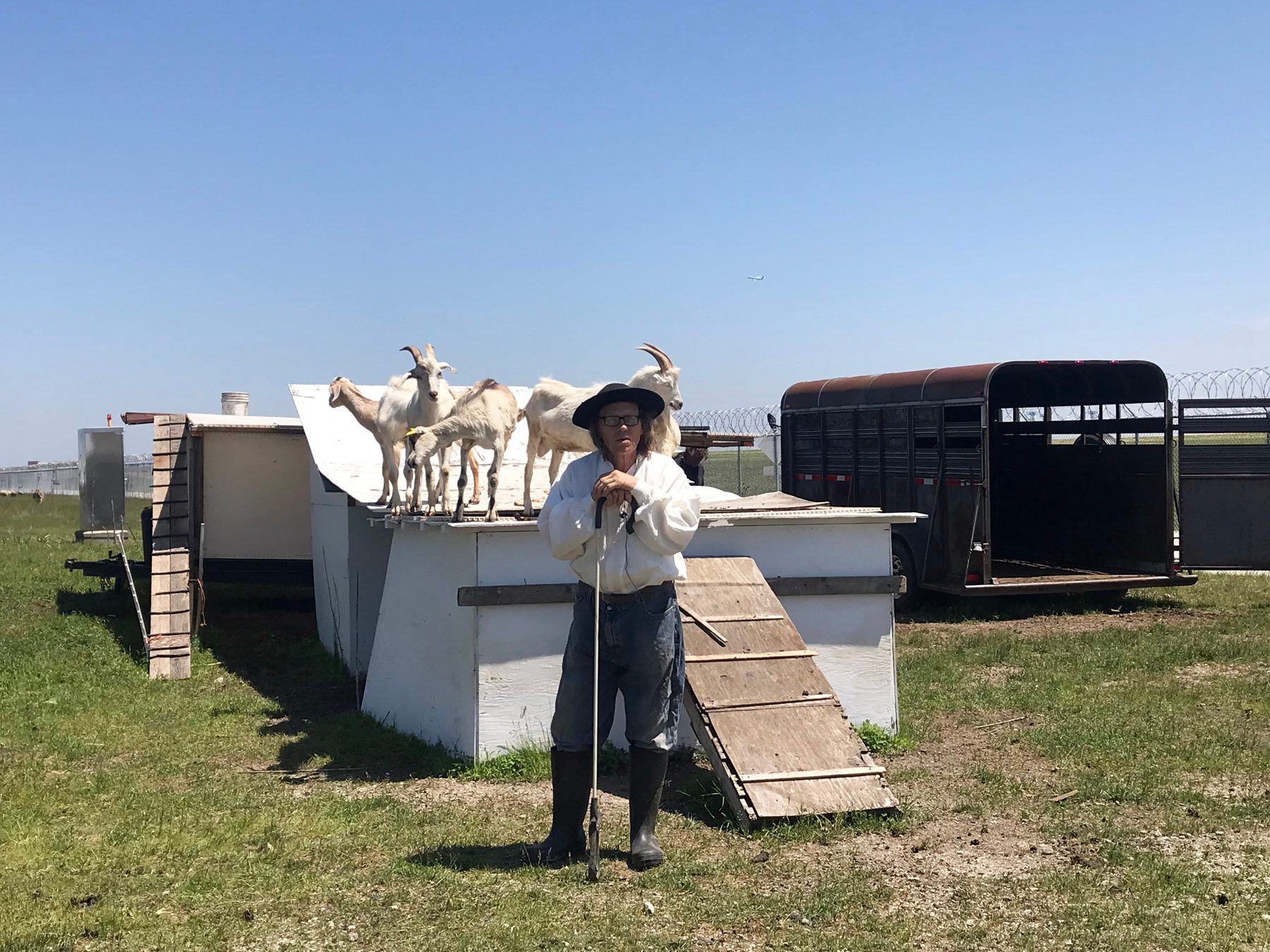
The ruminants are playful youngsters—between nine months and two years old—and do not have names (Tokarz calls them “animal units”). The donkey, around age five, goes by Jackson, a trace of his former life at a petting zoo. The big-eyed equine has an extra important job: He protects his pals from coyotes, which see the field as a site for their own potential buffet. “He will scare them off,” Tokarz says. “It’s a combination of his bell and his ability to kick and bite.”
Speaking of noise, one might think that the roar of planes might frighten these tame residents. According to Tokarz, his animals did initially pause when they heard the foreign sound, but they quickly realized that the source wasn’t threatening. “By the time the third jet came by, they didn’t even bother to raise their heads anymore,” he says. “So they acclimated within a minute-and-a-half, two minutes.”
Goats are known for their ironclad guts, but also for their inquisitive nature. So it seems incredible that only one member of Tokarz’s herd has followed its curiosity to the point of running away: The billy goat dashed off when the electric fence fizzled out during a rainstorm, but the flockmaster was on site and caught the escape artist.
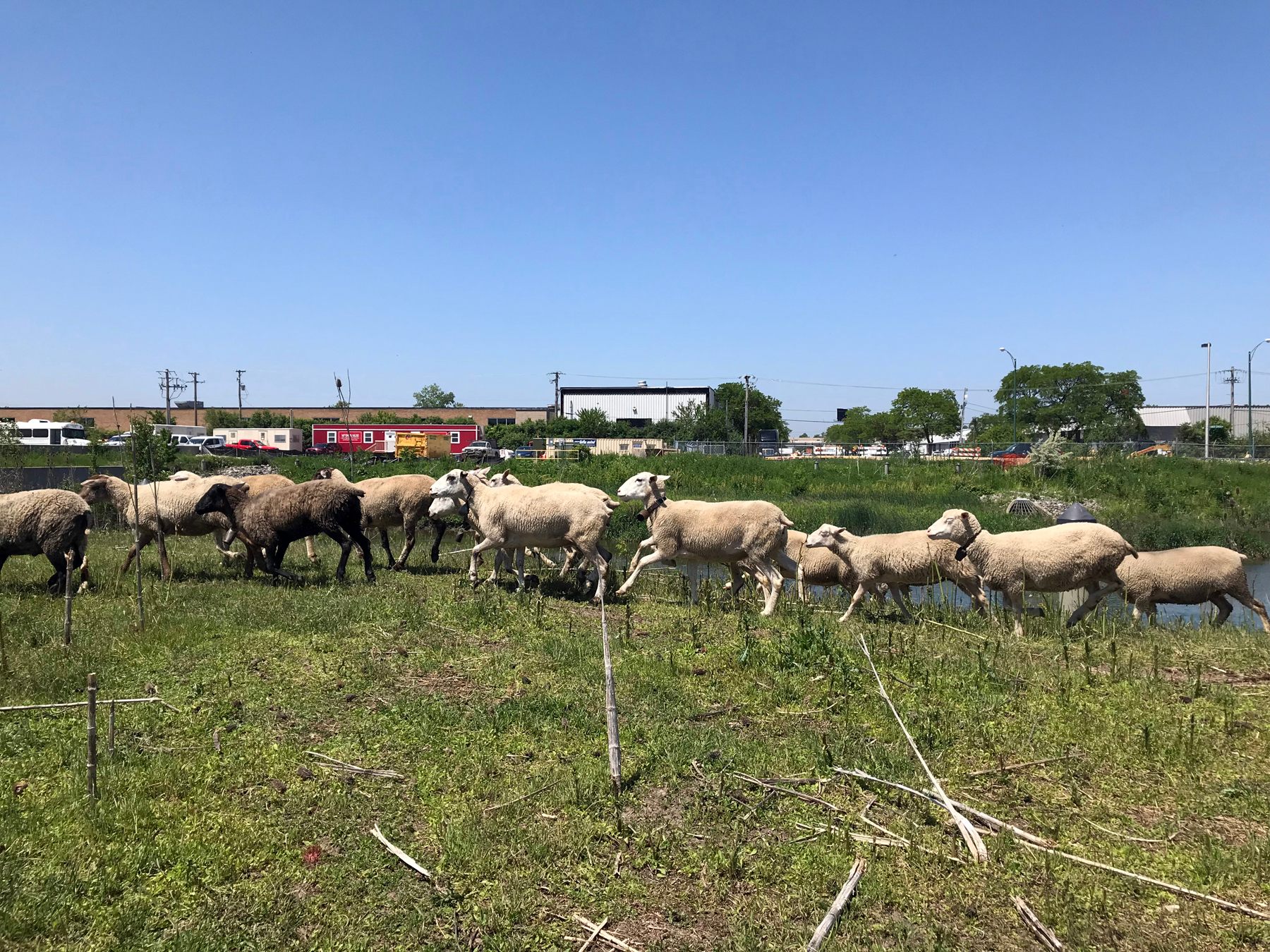
Goats are also famous for their love of standing on things. So Tokarz built them a ramp they can scamper on to reach the roof of one of their sheds. “Once they figured that out, they were in seventh heaven,” he says.
As the herd settles into their luxurious life, the area becomes less welcoming to hazardous wildlife—which, in the end, is for the good of skunks, deer, coyotes, and other unsuspecting creatures. Without tall grass, for instance, human workers can more easily spot geese and ducks who gather by the creek, and scare them away before they take off into dangerous zones.
“You don’t want a large congregation of anything flying in and out or around the airport,” Pullins says. “An airport is a terrible place for birds.” But it’s a perfect place, it turns out, for hooved herbivores.
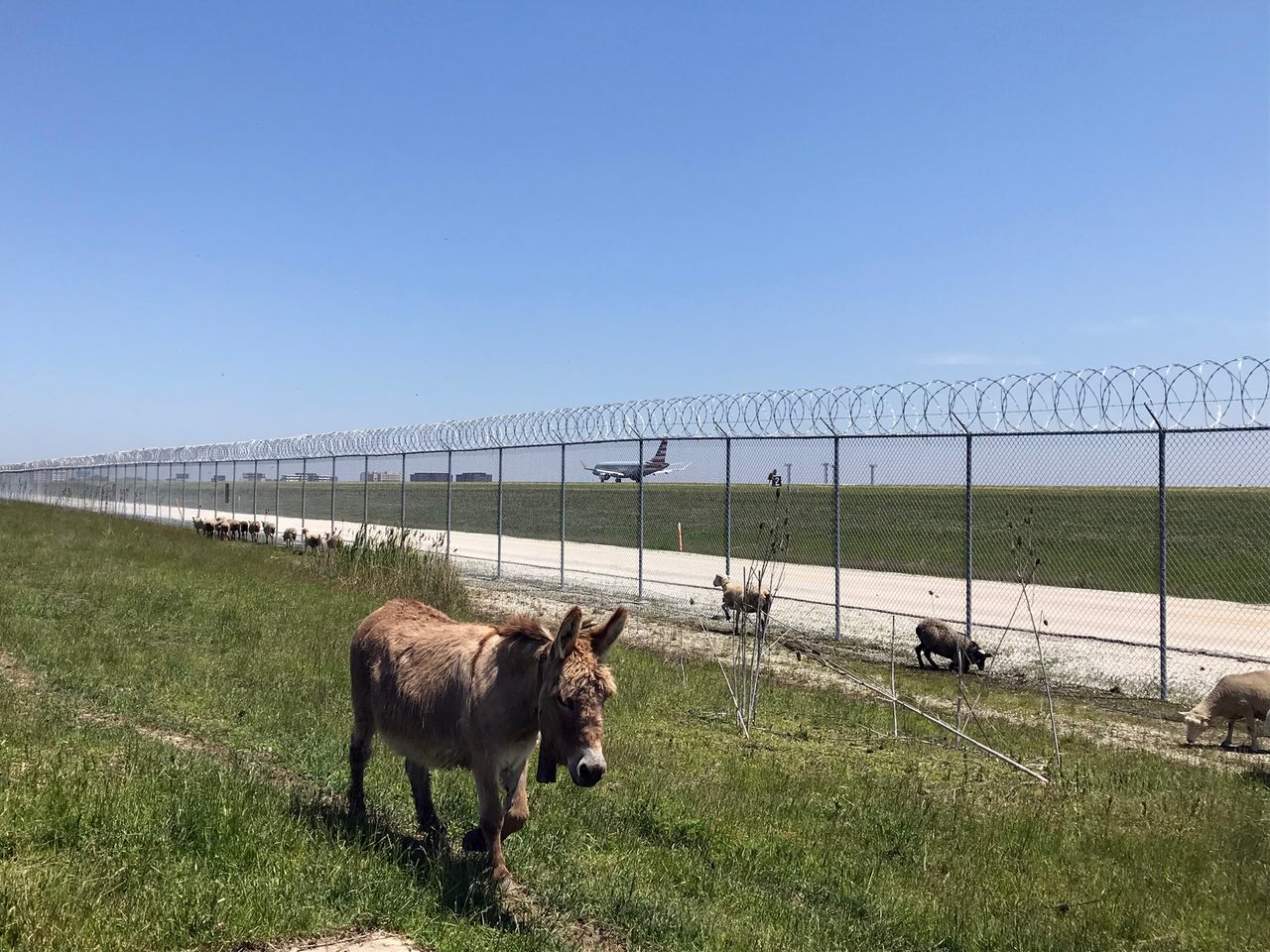





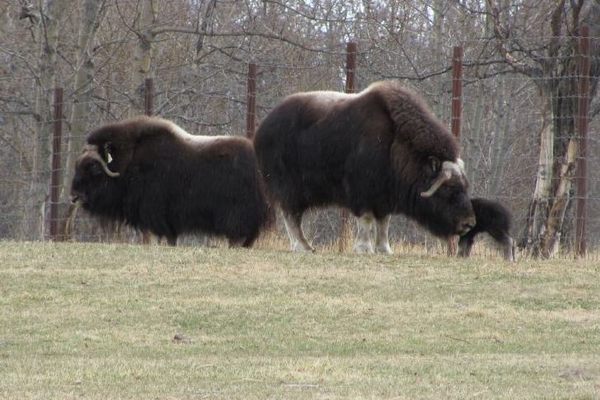











Follow us on Twitter to get the latest on the world's hidden wonders.
Like us on Facebook to get the latest on the world's hidden wonders.
Follow us on Twitter Like us on Facebook